
Boys' Clothes: Mid-18th Century
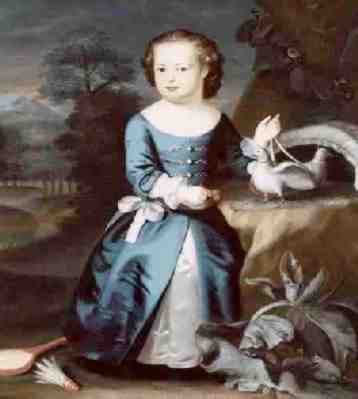
Figure 1.--Copley painted this portrait of Thomas Aston Coflin during
the 18th Century, I'm not sure about the date. The dresses worn by boys
and the girls were indistinguishable. This boy's dress is a scaled down
version of the styles being worn by adult women.
|
The mid-18th Century is the most important period in any history of
boys and girls clothes. It was at mid-century that specialized childrens
clothing first appeared. No where was this development more
apparent than Georgian England. This was not an accident. Profound
economic and social changes were underway leading the way to many of the
recognizeable features of modern society, urbanization, industrialization,
increasing domesticity, and the growing cult of the individual. These
changes were especially pronounced in the developing modern economy of
England. One outcome of these trends was changing attitudes toward
childhood itself, changes that led to advent of children's clothes.
Fashion
Fashion was essential for middle and upper classes throughout Europe in the 18 century and helped to identifies groups socially. There were major develipments in in retailing and distribution and etiquette during the 18th century. It was the time of the rise of the dress designer and couturier. Important developments were made which would lead to the ruise of ready-made clothes in the next century. [Ribeiro]
Childhood
The origin of our contemporary attitudes and in effect the invention
of children's clothes can be found in Georgian Britain. The Georgian
eras (1714 to 1837, named for the
first four King Georges) roughly correspond to the 18th century and the
organizational thread of this web site. The Georgian era was one of
tremendous change, as society reorganized itself in ways that we
have come to define as modern: the advent of industrial economies;
increasing emphasis on domestic life; the cult of individuality.
Nowhere is this change more evident than in family relationships, as
the family came to be based for the first time on bonds of affection
rather than economics. The child, once at the periphery, moved to the
center of family affections as the Victorian era approached.
While there is much evidence that parents have always prized their
children, Georgian Britain led
the way in Europe to viewing childhood as a special phase of human
existence. Artists themselves
participated in this movement as both recorders of contemporary values
and as activists
promoting change. Wider audiences come dramatically into play as well.
The century saw the
advent of the first opportunities in Britain for the public display of
art (such as the founding of the
Royal Academy in 1768) and the widespread popularity of inexpensive
prints and illustrated books created expressly for children. Collectively, these works of art played public and private roles central to the creation of a new view of the child.
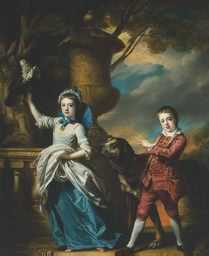
Figure 2.--Ana Marie and Edward Ashely? were painted by Francis Coks
in 1767. Edward was 5 1/2 years old at the time and had been breeched.
He wears the standard coat and knee breeches of the mid-18th Century which
were virtually identical to his father's clothes.
|
View of the Family
The evolving institution of the family found fervent champions among
writers and artists beginning in the 1740s. Most sought to imbue the
country gentry with what were fundamentally middle-class values. This
led to a blurring of class lines during the period. Among the values
promoted were domesticity--a cult of family and hearth that lay at the
heart of the Romantic movement and which were to become the very core
of the Victorian ideal. Similarly, many writers and
artists promoted a cult of "sensibility," which sought and highly valued heightened emotional response to life and art. Morally didactic scenes built on sensibility, such as artist George Morland's revealingly paintinng "The Comforts of Industry" and "The Miseries of Idleness". Art in the 18th Century often, as in Morland's two paintings, sent none to substle moral messages, focusing on the family, hoping to instill parental devotion by exhibiting the rewards that awaited virtuous parenting.
View of Childhood
The popularity of the family portrait exploded in the mid-17th century in Britain and the countries of Western Europe benefiting from expanding economies. This provides more images than ever before of families--offering more images of childhood and period clothing than ever before. The explosion in the number portraits of course was the result of the expanding middle class. Many of modest beginnings were able to enter the middle as a result of the wealth created by the expanding economy. The expanding middle class also wanted portraits which had previously been primarily obtaininable by the affluent. The ne middle class sought to emulate the wealthy classes in recording themselves in paint as well as other media.
The middle class not only was responsibe for the commissioining of more portraits than ever before, but the values of the increasingly important middle-class began to reshape the structure of the family and the position of children in the family. The rising economic and political influence of the middle class made these values increasingly important. These changes can be noted in the art of the era and in clothing fshions. It is no accident that it was during this period that children began to be seen as very different than adults rather than simply small adults. The result was in the late 18th century the appeaance of destinctive clothing styles for children. Changes in the child's place within the family and can be seen visually in family portraits. The often statically posed, hierarchical images
such as Arthur Devis's "The John Bacon Family" (1742-43) give way to the more animated and varied representations of children with their parents that are depicted by later artists. The artists perhaps unconciously provide a onderful record of changes in family patterns and relationships.
Americans in the 20th Century tended to assume innosence as a basic attribute of childhood. This concept was not widely held by early 18th Century Britains and other Europeans. Attitudes were, however, changing. The nature of childhood was a matter of intense discussion fueled by inquiring literary output. Middle and upper class Europeans intensely discussed the question of the basic nature of children. Starting from views of the child as a creature of innate evil (a Calvinist doctrine), philosophers of the 18th Century began to form a very different consenus about childhood. The child began to be seen as an esentialy innocent creature--at least until corrupted by society. Beginning with the writings of the English philosopher John Locke around 1700 through the publication of the French philosopher Jean-Jacques Rousseau's influential writings on childhood in the 1760s, a major philosophical change took place in the European mind. The child by the mid-18th century had become more allied with the world of nature. Childhood began to be seen as a period of improbably extreme innocence. This view became widely held among Europeans and Americans throughout the 19th centry until shatered by Sigmund Freud in the early 20th Century.
Father
The most profound shift in the family structure dealt with the
father's position within the
family, and his historical role as the economic provider and
disciplinarian. Although fathers were
still represented with their children by artists of the Georgian period,
they were most often seen in the act of educating or guiding their
proginy. At the same time, artists began validating the separate world
of childhood as children broke down the traditional hierarchies of
power centered on the father.
Play
The educational value of play in particular seems to be a peculiarly
modern notion. Play was discouraged by most parents in the early 17th century. Traditional 18th-century parents generally insisted
that play, along with affectionate behavior, be abandoned at the onset
of the "age of reason"--as early as 7 years of age. This is somewhat understandable in socities where fmilies produced little surplus and family members produced only the bare necessities. The expanding 18th century economy was changing this. Traditional attitudes
derived from the heritage of English Calvinism were still widely held
in the mid-18th Century. One classic expression of traditional views on childhod were the Letters of Lord Chesterfield to His Son. They were written in the 1740s and proved enormously popular when published in the 1770s. Lord Chesterfield advised his son: "No more levity: childish toys and playthings must be thrown aside, and your
mind directed to serious objects." It was only during the mid-18th century that some parents began to see that play could be instructive and thus had a meaningful role in a child's development.
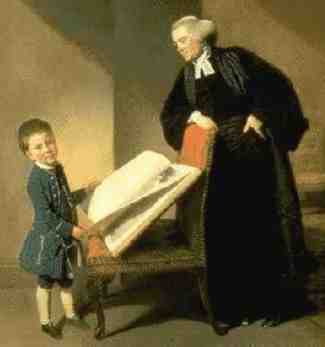
Figure 3.--Zoffany in this 1769 portrait painted the Reverend Randall Buroughs and his son Ellis. The boy wears a suit indistinguishable from adult fashions. Note the young age at which Ellis is being taught to read.
|
It was during the mid-18th Century that a public debate first time
developed on the nature of childhood. The issue was widely discussed.
The great philosophers of the day as well as social reformers began
promoting the idea. Writers had raised the issue earlier. Locke had
raised the issue in the late 17th Century, but his advamced ideas did
not resonate with the public at the time. By the mid-18th Century,
however, the powerful economic and social forces sweeping England, France, and the Lowlands was beginning to affect the public mindset. The now obvious percepts that children were more fragile than adults and more innocent began to resonate with the public. These were very novel ideas at the time. But once accepted they fundametally changed society's appraoch toward children. Reformers argued that cildren should be taught differently, given different diets, and dressed differently from adults. Some of these percepts, such as different clothing better suited to the needs of children, were not novel to human society. Ancient societies such as Greece and Rome
had specialized children's clothing. European children had, however,
for centuries worn the same styles worn by their parents. Interestingly, while all future generations of boys have worn specialized styles, at times they have been styles decided unsuited for their special needs such as the heavy suits or fancy lace-trimed Fauntleroy suits of the late 19th Century. Other new reforms such as diet appear to have been truly novel.
The idea that children were not just minature adults was not immediately widely accepted. At first it was the wealthy, more literate elite that accepted them. Society was slow to change. Tradition, economics, literacy, education, and many other factors affected the speed at which these new ideas were accepted. Children from working class families
continued to work at an early age. They might begin working with their
fathers soon after breeching. They often receiving little education.
Many were appreticed at 12-13 years of age. Girls might
marry at very young ages, sometimes as young as 12. Children were
generally expected to uphold adult standards. Children convicted of
crimes were treated as adults with penalties of enormous severity.
While the progress of social reform was slow, it was at the mid-18th
Century that the European attitudes began to change.
Education
No where were the developing new view of chilhood more heatedly
debated than among educators. Some philosiphers such as John Locke had
raised new views toward childhood and education in the late 17th Century.
His ideas on education were little noted at the time and did not
resonate among 17th Century parents. As described above, however, England
and other European countries were undergoing profound changes. When
a new generation of social critics raised the issue of the nature of childhood
and education, they found a greaty changed and more receptive
audience.
John Locke
Beginning with John Locke's Some Thoughts Concerning Education
(1693), the Georgian period engaged in a profound debate over
education. Locke had suggested that the goal of education
was to prepare the child to achieve future independence in the world.
Even so, this meant
controlling the child's true, perhaps unruly, nature. Boys were to be
educated outside the home,
safely removed from the "pernicious" domestic sphere of women and servants.
Philosophers such as the Frenchman Jean-Jacques Rousseau
advocated increased freedom for children. He and others promoted play,
especially
out-of-doors, for developing physical strength. Child's play came to
embody innocence, a
romanticized world lost to adults and recorded by many artists. When the
childless artist and poet William Blake observed a group of children
playing in London's Fountain Court, he exclaimed, "That is heaven!"
Jean-Jacques Rousseau revolutionized English thinking on
education in the 1760s by
arguing that "experience," that is to say education, was a mixed
blessing. His slender volume Emile, ou de l'Education,
published in 1762 caused a sensation. He acknowleged his debt to Locke.
He presented revolutionary precepts
on education. According to Rousseau, the child should be allowed to run
about "idly at hazard" until age 12, protected from harmful experience
of the world by a tutor or guide.
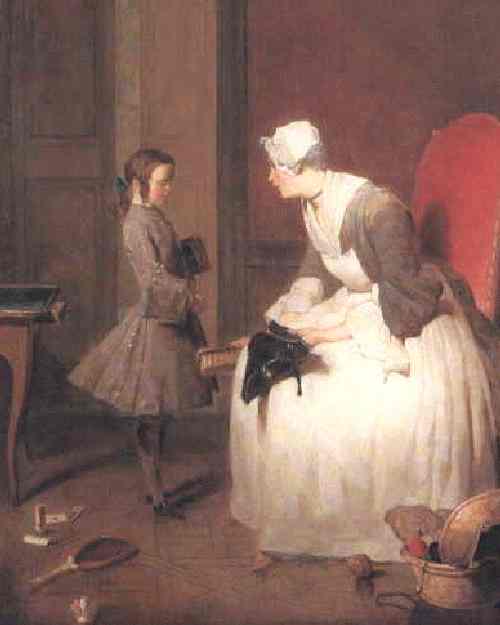
Figure 4.--This painting by Frenchman Jean Simeon Chardin depicts a French boy about 1740-50. Note the quque and hair bow and the large cuffs on the jacket.
|
Rosseau inspired great controversy. His book was considered so
revolutiinary that it was actually banned in several
countries and he had to flee France for England. Even Rosseau's suporters
had trouble defending him. His progressive ideas on childraising seemed
to many dishonest given the fact that he abandoned his five illegitimate
children to a foundling hospital. He claimed that he did it for their
own good as he could not write and support them at the same time. The
conditions in such institutions, however, make one wonder how the same mind
that conceived of amore hymane approach to childhood could have
condemned his own children to foundling hospital.
Rosseau's respect for childhood influenced
educational theory on all levels. The force of his and other reformers'
ideas and the economic and social changes underway at mid-Century
gradually affected the European approach to childhood. Indeed, more and
more children
by the mid-17th Century were receiving at least a rudimentary education,
and artists recorded such instructional settings in picturesque fashion.
Voltaire
Another highly influential French writer was Voltaire. His comedy
Candide (1759) proved very influential.
Public attitudes
The new priciples of education and childhood were not immediately
accepted by the public at large. In fact writers like Rosseau were
severely criticzed, sometimes driven out of their communities for
their revolutionary thought. Their ideas, however, inspired a heated
debate in the changing societies of 18th Century Europe. There ideas
did begin to take root
among only the wealthier, more literate lasses.
Children's books
Books written expressly for children, including chapbooks (story books
or nursery rhymes), alphabets, and readers, first flourished in the
18th century. Most of these books intended to
awaken adult modes of perception in children. They promoted improvement,
not pleasure. Many even sought to teach children, through word and image,
about the likelihood of an early death. By contrast, William Blake
hoped the ways of children would inspire adults to rekindle the visionary
flame of childhood. Sarah Fielding in 17?? wrote the first English
novel expressly for children, The Governess.
Visual Representations
Visual representations of the European child reflected these changing
views. Artists increasingly depicted
children outdoors, often close to animals and the larger natural
world. Moving from artificiality to
action, from stereotype to individuality, artists portrayed
increasingly real-looking children. Sir Joshua Reynolds's Master
Hare (1788) exerts a powerful presence in
a landscape setting, in command of the world around him, embodying the
new idea on childhood.
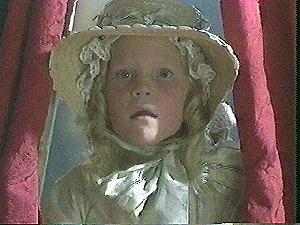
Figure 5.--The dresses worn by little boys and girls were very accurately
illustrated in the movie, "The Madness of King George".
|
Men's Clothes
It is interesting to note that Up until the late 18th century, it
was often the man who dressed, if not more flamboyantly than women,
cerainly in very elaborate costumes. Mens'
wardrobes were filled with laces and bows as well
as high-heeled shoes with shiny buckles. Even American presidents were
not immune, as a sartorially splendid George Washington appeared at his first Inaugural
wearing a brocade jacket, lace shirt, silver
appointments, and high-heeled shoes with diamond buckles. This began to change in the later decades of the century, perhaps not coincidentally at the same time that special children's clothing styles developed.
Boys' Clothes
The new developing image of childhood was reflected in their
clothing. Boys at the beginning of the century continued to be dressed in
dresses until 5 or 6 years old. After emerging from dresses they were
atired in minature versions of their father's clothes. Elaborate and formal finery for the
young gentleman of the 18th century might be a fine damask suit with
pleated jabot, cuffs and stock--just like the outfit that might be worn
by his farther.
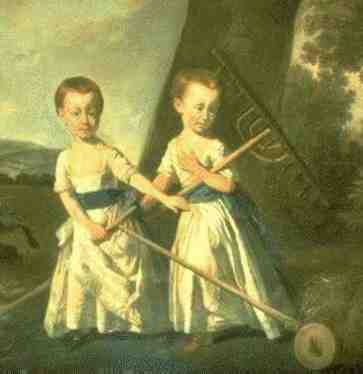
Figure 6.--Johann Zoffany painted the two Blunt brothers about 1769.
While still in dresses, some historians believe that the blue sash
shows that they are boys. (Other
authors suggest that color conventins had not yet developed.) They were
born into a wealthy land-owning familes symbolized by the farm implements
they are holding.
|
Clothes like their parents
The fashion of dressing children like their parents, still prevalent in the early 18th Century, reflected the prevailing view of childhood. It may be difficult for the modern reader to understand, focused as we are on on issues of childhood-including new
definitions of the family. The nuclear family symbolized by June and Ward Cleaver for those of us who grew up in 1950s America no longer exists for millions of American children. The ubiquitously termed "family values," and child abuse--we must remind ourselves that childhood and the family have not always been as we know them. Many of the
attitudes we hold concerning children and their special importance and needs were inconceivable to century Europeans before the mid-18th Century. Prior to
the mid-18th Century, for example, the concept of childhood development
and teen-age culture were unheard of. Children then, while loved by their families, were viewed as little more than small, vulnerable adults.
Many of our contemporary attitudes surrounding children began to develop
in Georgian Britain. This period (1714 to 1837, named for four King
Georges in sucession) stands out as one of
tremendous change, as society reorganized itself in ways that we now
recognize as modern: the growth of nation states, the emergence of a
middle class with democratic aspirations,
the advent of industrial economies; increasing emphasis on domestic life;
the cult of individuality. Nowhere is this break with the past more
evident than in family relationships, as the family came to be based
for the first time on bonds of affection rather than economics. The
child, once at the periphery, moved to the center of family affections.
Parental attitudes toward children have changed remarkably in various
historic epochs. Considerable evidence shows that parents have always prized their children, Georgian Britain led
the way in Europe to viewing childhood as a special phase of human existence. Artists themselves
participated in this movement as both recorders of contemporary values and as activists promoting
change. Wider audiences come dramatically into play as well. The century
saw the advent of the
first opportunities in Britain for the public display of art (such as the
founding of the Royal
Academy in 1768) and the widespread popularity of inexpensive prints and
illustrated books created expressly for children. Collectively, these
works of art played public and private roles central to the creation of
a new view of the child and provide many graphic depictions of children's
clothes in the centuary before the development of photography,.
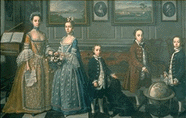
Figure 7.--Boys until the later part of the 18th century were dressed in
smaller versions of their fathers' clothes with little regard for the needs
of childhood. Strickland Lowry painted the Bateson family pictured here in
1762.
|
Boys after they were breached from dressed were just like their fathers
in the early 18th century. Men's coats weremade with fuller skirts, and the sleeve s were made with wide cuffs. The
sleeved vest became shorter and was often richly embroidered; after a time
the vest
was made without sleeves. Another 18th-Century addition to male
costume was the buckled knee breeches. A smart formal suit for the
young gentleman
of the time might be an elaborate fine damask suit with
pleated jabot, cuffs and stock.
New specialized children's clothes
It was in England at mid-Centuru when someone
had a novel thought, that boys might be dressed in distinctive
juvenile clothes, in this case long trousers or pantaloons.
Someone had the inspiration that boys might wear sailors' trousers.
Men and boys at the time wore knee breeches. English
seamen (not officers) had, however, been dressing in pantaloons since
the 17th Century and English boys adopted trousers a half
century before their fathers did. While initially a novel concept,
the practice after mid-century began to acquire increasing popularity.
English children were the first to be emancipated, little girls and
boys before breeching changing to soft, unlined frocks in the 1770's with
France and the Colonies following next. Some well-known writers had
taken the age to task for its manner of
confining infants' bodies in tight clothes, among them John Locke,
the English philosopher (1632-1704), who was probably the big
influence in the change. He was followed by Jean Jacques Rousseau,
the French philosopher (1712-1775), who carried on the crusade and
was forced to flee Paris for England because of his revolutionary
ideas.
Infant Clothing
Infants' swaddling clothes lasted well into the 18th century.
The baby also owned a complete set of dress clothes which were worn
for the christening ceremony and any other public occasion. Such
garments were exquisitely made and beautifully embroidered. The
skirts attached to
the tiny bodices were invariably a good four feet in length. Yellow
was the traditional color for the christening dress with embroidery
in silk, or gold for an "upper class baby."
The Age of Reason and comfortable clothes
The writings of the Age of Reason were having an effect in putting children into comfortable-clothes, the trouser costume known as the English sailor's dress being a short little jacket with a "v" open-necked blouse, often with a ruffled or frilled
collar, a waistcoat without skirts and the long
breeches.
Country Differences
America
Early American clothes for children were basically similar to English styles, perhaps simpler and sturdier.
England
France
Mismanagment of the economy by royal authorities retarded the growth of the middle class. The French middle class until the Revolution in 1789 had limited political power and thus influence. Even so there was a substantial middle class.
It was during the mid-17th century, in the Midlands of England that the Industrial Revolution began, cerainly the most profound economic and cultural development of mdern times. And it was the cotton textile industry that served as the engine for this phenomenal transformation of society. It would be decadeds before the actual production of clothing was mechanized, but the efficent production of cotton textiles was the first step in that direction and in fact all modern industrail manufacturing process. The results have not only transformed economies, but revolutionalized our very life styles.
Sources
Berkeley Exhibition, "New Child, the Emergence of Modern Childhood in Georgian Britain".
Ribeiro, Aileen. Dress in Eighteen Century Europe: 1715-1789 Revised Edition (2002).
Christopher Wagner

Navigate the Historic Boys' Clothing Web Site:
[Introduction]
[Activities]
[Artistic chronologies]
[Bibliographies]
[Biographies]
[Countries]
[Style Index]
[Contributions]
[FAQs]
[Glossaries]
[Satellite sites]
[Boys' Clothing Home]
Navigate the Historic Boys' Clothing Web chronological pages:
[Chronologies]
[The 1500s]
[The 1600s]
[The early 1700s]
[]
[The late 1700s]
[The 1800s]
[The 1810s]
[The 1820s]
[The 1830s]
[The 1840s]
[The 1850s]
[The 1860s]
Created: February 20, 1999
Last updated: November 8, 2002









